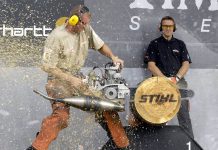Erkki Vettenniemi
Department of History and Ethnology, University of Jyväskylä

Scientizing performance in endurance sports: The emergence of ‘rational training’ in cross-country skiing, 1930–1980
212 sidor, paperback, ill.
Stockholm: KTH Royal Institute of Technology 2016
ISBN 978-91-7729-205-0
‘When it comes to scientific methods in sports coaching,’ the Swedish physiologist Per-Olof Åstrand boasted in 1964, ‘we are on a par with the Soviet Union.’ Åstrand had looked after Swedish skiers for about ten years, and his slightly smug statement was, in fact, a perfectly legitimate observation. It also justifies Daniel Svensson’s set of essays in which the author aptly explores the post-war modernization of cross-country skiers’ training in Sweden, one of the three Nordic powerhouses of this particular sport.
Entitled Scientizing Performance in Endurance Sports, Svensson’s doctoral thesis comprises five articles, three of which deal with training. As the two remaining essays have more to do with landscape studies than training studies, I happily note that Svensson’s supervisors did not protest at their inclusion in his PhD project. Until the introduction of machine-made ski tracks and artificial snow, skiing depended on nature, and ski races highlighted the alleged symbiosis between the Nordic landscape and human locomotion on snow. (Svensson ends up discussing the marketing strategies of the famed Vasaloppet. In that context, I would have loved him to acknowledge Vasaloppet China, the delightfully postmodern ski event complete with dragon-shaped snow sculptures.)
To put it simply, the shift from traditional or ‘natural’ training into science-based or ‘rational’ training meant standardized physiological tests carried out by academic aficionados of skiing. Svensson rightfully insists that Per-Olof Åstrand and his colleagues sought to improve the physical wellbeing of the population at large, but they would hardly have travelled to races and training camps all over the Northern Hemisphere without being passionate about the success of ‘their’ athletes. Ironically, a Danish scholar, known for his indifferent stance towards sport, established the Swedish school of exercise physiology. Employed by the Royal Central Institute of Gymnastics (GCI) in 1941, Erik Hohwü Christensen put an end to the hegemony of gymnastics at GCI and authorized his junior colleagues’ collaboration with the Swedish Ski Association. The Stockholm institute turned into the envy of other ski nations under Christensen’s guidance, which formally ended with his retirement in 1969.
Yet the origins of skiing science go further back in history than Svensson suggests. The Swiss physician Wilhelm Knoll (1876–1958) published a host of highly relevant studies in the early twentieth century, including a monograph entitled Skiwettläufer; he carried out research among Olympic skiers in 1928 and served as the first president of the Féderation Internationale de Médicin du Sport. Instead of acknowledging Knoll’s contribution to skiing research, Svensson repeatedly refers to the Harvard Fatigue Laboratory that never truly cared for sport (though it did have a distinct impact on Christensen).
Interestingly, Svensson maintains that some Swedish skiers were initially reluctant to submit their bodies to scientific gaze. He has interviewed twenty elderly skiers, and the clash between tradition and innovation comes up throughout the essays under discussion. In fact, most skiers in the three ski-loving Nordic countries originated in rural areas, and forestry was a crucial element in their training regime until the 1960s. The front cover of Svensson’s book features a serious-looking scientist conducting a blood test on a skier amidst a pristine forest in 1969. At the time, felling trees during a training camp had fallen out of favor with coaches.
While it is not Svensson’s fault that the Finnish research is available only in Finnish language, he could have at least abstained from hasty conclusions.In terms of physiological follow-up, Swedish skiers were well ahead of Norwegian athletes, as Svensson notes. (For circumstantial evidence, see the results of post-war Winter Olympics until 1964.) Does it mean that the Finns, too, stuck to traditional solutions in their training? Being unfamiliar with Finnish sources, Svensson overlooks the Finnish cross-country skiing’s ‘scientific’ turn that closely mirrored developments in Sweden. As from 1950, Finnish skiers had ambitious scientists at their disposal; they benefitted from blood analyses and bicycle ergometer tests, they experimented with low-pressure chamber, etc. While it is not Svensson’s fault that the Finnish research is available only in Finnish language, he could have at least abstained from hasty conclusions.
That said, Swedish skiing scholars surely remained a notch ahead of their Finnish counterparts until the last quarter of the twentieth century. During the 1959 pre-games in Squaw Valley, for example, Per-Olof Åstrand welcomed the Finnish champion skier Veikko Hakulinen into his portable exercise laboratory. When Hakulinen dared to ask for results, the answer was less than polite. ‘Medals are not distributed on the basis of tests,’ Åstrand berated the Finnish ace. Hakulinen and other Finns were Åstrand’s rivals, after all, and no academic in his (or her) right mind would agree to assist athletes belonging to the enemy camp.
What happened the following year is arguably the most startling incident related by Svensson. The same scholar who had recently discounted the value of applied physiology, handpicked the Swedish women’s Olympic relay team after ergometer tests – and the Swedes won the race. Scientific knowhow, it seems, did contribute to the distribution of some medals. Alas, the Swedish men turned down Åstrand’s kind offer and finished fourth, far behind the victorious Finns whose anchor happened to be Veikko Hakulinen.
Among other variables, Åstrand and his Swedish colleagues paid attention to blood values, in particular the oxygen-carrying ability of hemoglobin. In 1971, one of them (Björn Ekblom) discovered the blessings of blood transfusion for athletes – or, he claimed to have discovered the benefits of blood packing. Contemporary observers in Sweden and Finland denounced the preposterous claim: athletes had resorted to blood boosting for years! Svensson, for his part, relies on the physiologist who pretended to be alarmed by his so-called discovery. A more probable scenario is that the Swedish scientists published their blood packing paper as soon as the method had become a commonplace in skiing and other sports, as I suggested in my contribution to the Routledge Handbook of Drugs and Sport (2015).
Daniel Svensson’s somewhat naïve understanding of performance enhancement in elite sport does not detract from the value of his pioneering essays. It is a curious fact that scientists developed a keen interest in the globally insignificant sport of cross-country skiing at a relatively early stage. A happy confluence of tradition (skiing as a quintessentially Nordic pastime, to paraphrase Svensson) and innovative scholarship resulted in the rise of Swedish skiing in the 1950s, though we will never know which medals owe their existence to cutting-edge research. The same holds true for all countries and periods. Next, Svensson might wish to tackle the tumultuous 1970s during which East German skiers challenged the hegemony of Nordic athletes. ‘No secrets,’ an East German official replied to skeptical reporters in the 1974 World Championships held in Falun, Sweden. ‘We just imitate the Nordic skiers.’
Copright © Erkki Vettenniemi 2017








